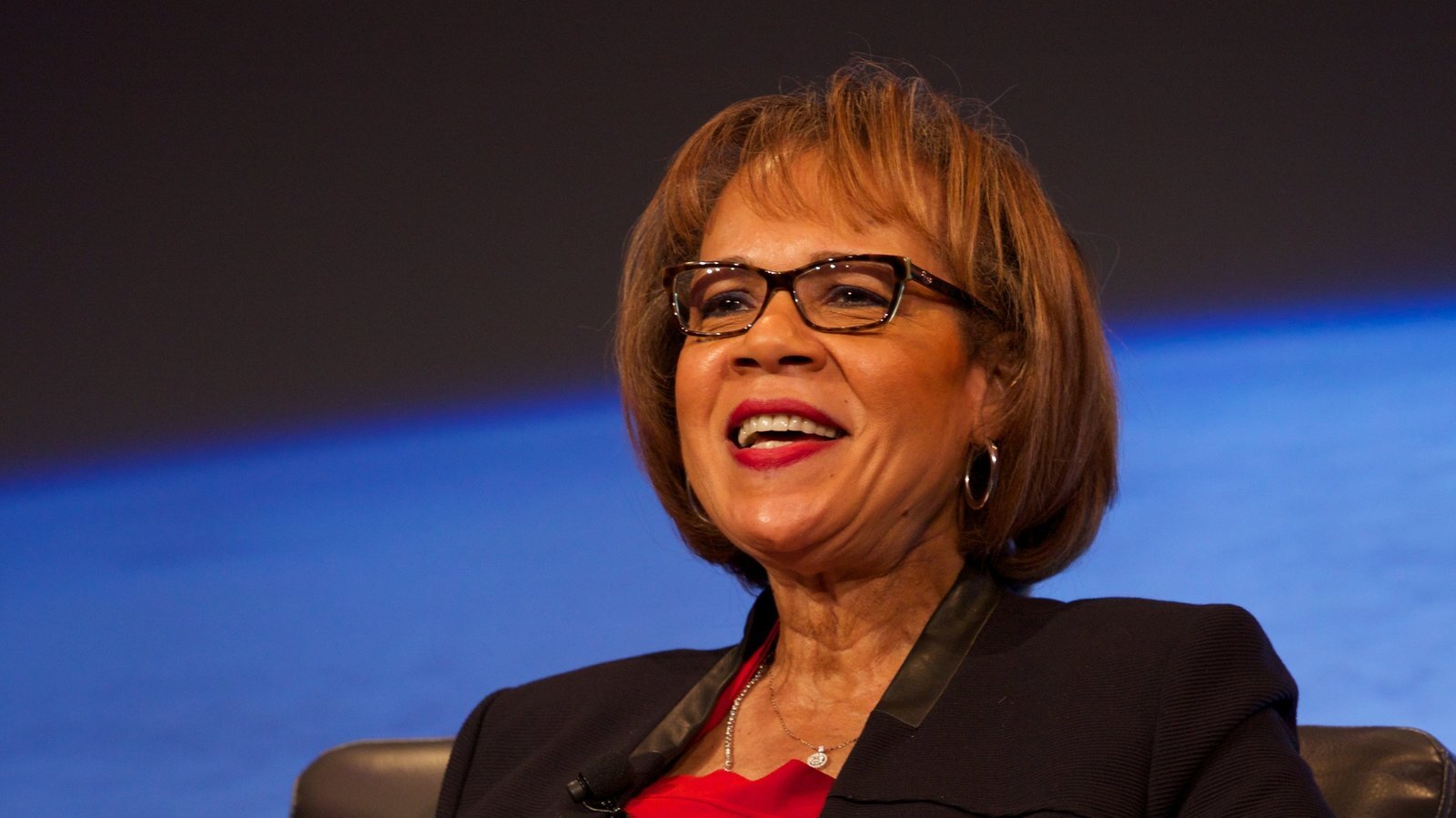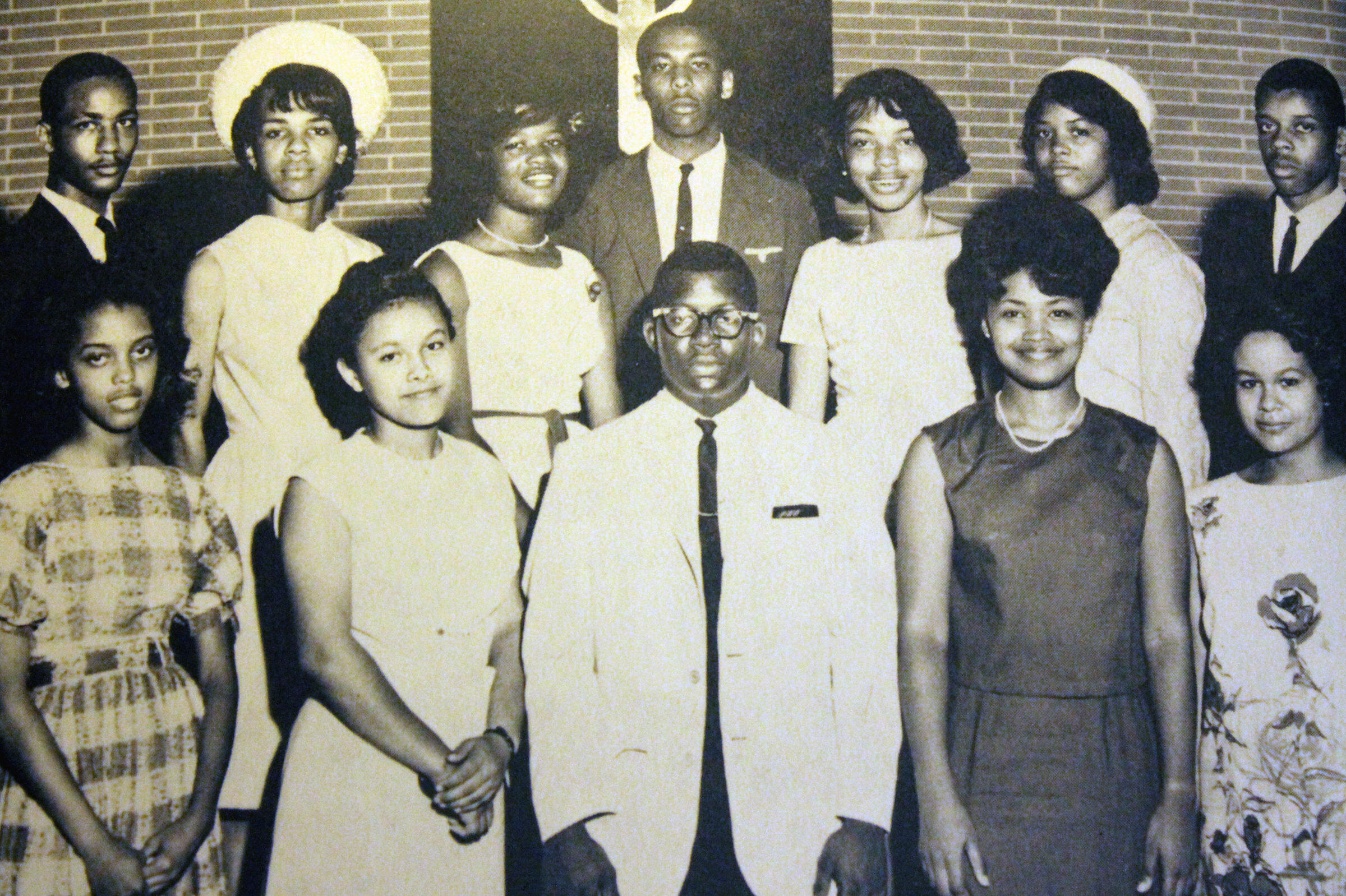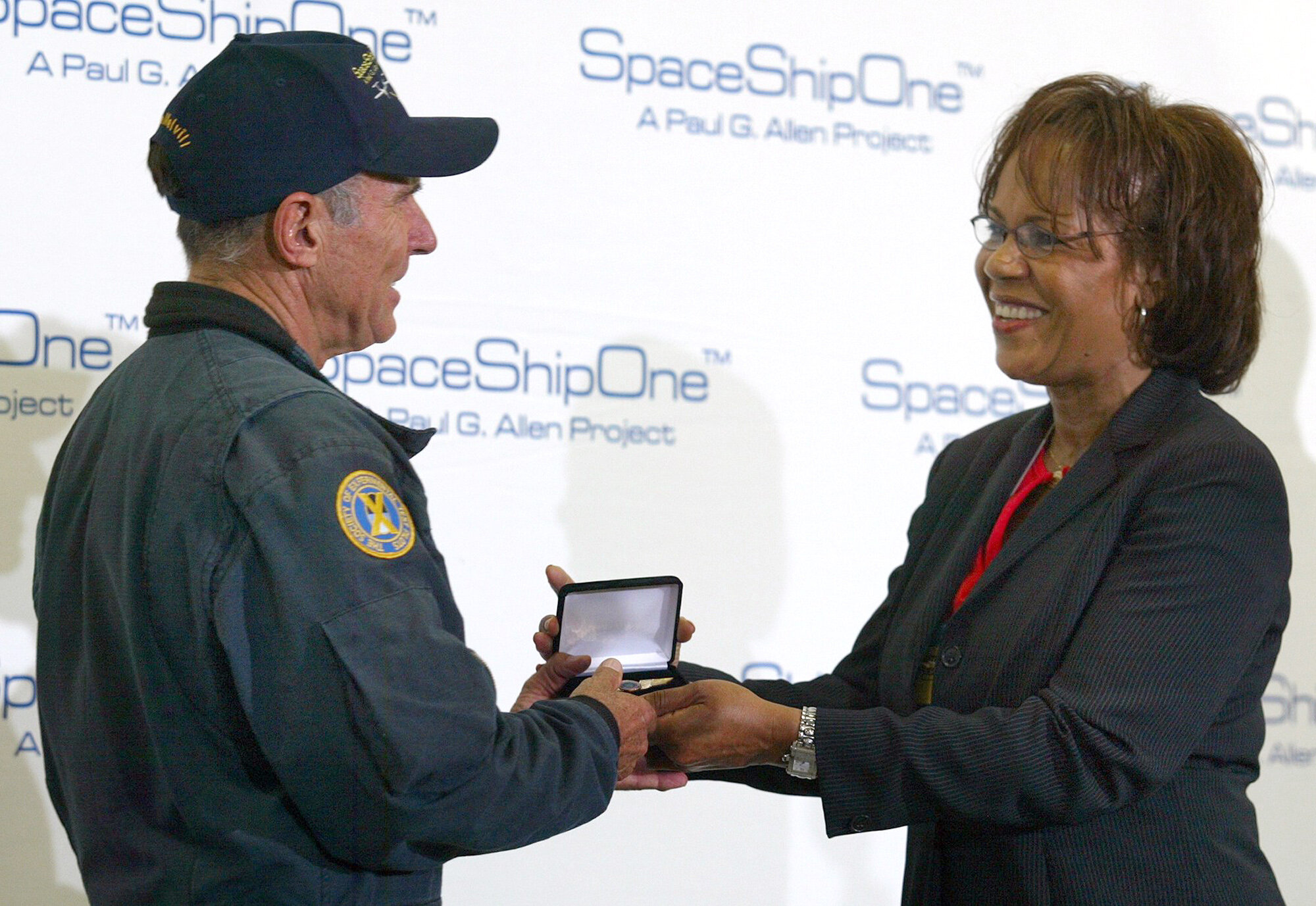
Let us introduce you to Ms. Patti.
Patti Grace Smith was an aerospace trailblazer, a mentor, a pillar of the Black community, and a friend. She was our inspiration for this program — and we think she could be your inspiration, too.
Patti’s life and career spanned an incredible range. She was one of the students to integrate the public schools in the Jim Crow South, and she was a pivotal figure in the dawn of commercial spaceflight as well, with a million things in between. Along the way, she was unceasingly kind, caring, intelligent, creative, and compassionate. She left a mark on this industry, in a major way.
Patti was born in Tuskegee, Alabama in 1947, the grandchild of railroad workers and tenant farmers. Both of Patti’s parents were first generation college students — her father at Texas Southern University and her mother at Paine College. Her parents met at Tuskegee Army Air Field, home to the famous Tuskegee Airmen.
Like everyone else in her family and her community, Patti’s life was affected early on by the era of legal segregation and prejudice. But her family worked and pushed to overcome that injustice and provide the best possible education for Patti and her younger siblings.
“Patti and I grew up in Alabama at the same time on opposite sides of the racial divide. I wish I had known her then. I am awed by her courage, her resolve, her humility and her charm. She left this world a better place in so many ways. Godspeed, Patti, you are missed.”
In 1963, Patti and her sister Wilma became two of a dozen plaintiffs in Lee vs. Macon County Board of Education, a lawsuit aiming to force the racial integration of the all-white Tuskegee High School over the hateful opposition of Alabama Governor George Wallace. Throughout the process, Governor Wallace and his white supremacist state government threw every obstacle that they could at Patti and the other children: issuing executive orders postponing the start of classes; attempting to transfer all of the white students to other schools; and even attempting to close the school entirely. These plans would ultimately backfire, providing the NAACP attorneys who tried the case with an avenue to expand the initial lawsuit to include all of Alabama’s primary and secondary schools, two-year postsecondary schools, and public universities. Ultimately, that case would be decided in favor of Patti and the other plaintiffs, with the ruling upheld by the Supreme Court of the United States.
As a teenager, Patti was a plaintiff in a landmark legal case that integrated the public schools in Alabama. The case was upheld by the US Supreme Court.
Patti is in the top row, second from the left. Her sister Wilma, another of the the plaintiffs, is top row, third from the right. Photo used courtesy of the Jones Family.
Despite the intense and unjust circumstances, Patti was an excellent student, graduating from high school a year early. She enrolled as a college student at the Tuskegee Institute — now known as Tuskegee University — majoring in English. While a student at Tuskegee, Patti was an active participant in the Student Non-Violent Coordinating Committee (SNCC), participating in many of that organization’s legendary and transformative voter registration campaigns through Alabama.
Upon earning her degree — with honors — Patti moved to the East Coast, working at a Sheridan Radio Network radio station and a Westinghouse Broadcasting Corporation television station (where she worked alongside a young TV anchor named Oprah Winfrey), followed by a job at the National Association of Broadcasters in Washington, DC. From there, she began her distinguished career in government, working for the US Senate Commerce Committee, the US Department of Defense, and the Federal Communications Commission. Her work at the FCC and the Defense Communications Agency introduced her to the realm of aerospace, as she began to specialize increasingly in the field of satellite communications.
That experience led her to a role at the US Department of Transportation, where she joined the Office of Commercial Space Transportation, rising to the position of Chief of Staff. In 1995, that office was moved from the Department of Transportation into the US Federal Aviation Administration (FAA); and soon, Patti was named the head of that office and an Associate Administrator of the FAA.
“[Patti] helped lay the foundations for a new era in American spaceflight. We are closer to becoming a multiplanet species because of her efforts.”
For eleven years, Patti ran the FAA’s Office of Commercial Space Transportation, the part of the federal government responsible for licensing, regulating, and promoting the entire U.S. commercial space transportation industry. Her tenure covered the most exciting and dynamic period in the commercial space industry’s growth, with Patti overseeing the licensing of the first inland spaceport, the first private human spaceflight, and the first launches of Elon Musk’s privately developed rocket, the SpaceX Falcon 1.
Patti was a key leader of the commercial space revolution — taking a crucial, proactive stance toward an emerging entrepreneurial sector that desperately needed an ally in government.
As the head of the FAA’s space division, Patti awarded the first ever pair of commercial astronaut wings in 2004.
Patti oversaw the development of rules for human spaceflight, as mandated by US Congress through the Commercial Space Launch Amendments Act of 2004. Under her leadership, FAA became the recognized global leader in private human spaceflight and space regulation, creating a model that is now being followed in nations around the world. Patti also forged partnerships between the FAA’s Office of Commercial Space Transportation and other key stakeholders in government, working with the US Air Force on common launch safety standards, and coordinating with the other parts of the FAA to address the impact of space flight on the National Airspace System.
After retiring from government life, Patti served as a consultant to many of the industry’s leading firms while also dedicating herself to a number of non-profits and charitable causes. She served on the board of the Space Foundation, the American Astronautical Society, and the Conrad Foundation, and was an Advisor to many other groups such as the XPRIZE Foundation.
“It is hard to imagine a space community without Patti Grace Smith. Not only was she the consummate professional, but she was a friend to everyone in our world. I wrote a lot of legislation to make space commercialization into a policy reality, but it was Patti who made the whole concept work in the real world. She took on bureaucracies and entrenched interests to change forever the space paradigm. The commercial pioneers and entrepreneurs have Patti to thank for breaking down the barriers that kept space activity in government hands rather than opening it to private investment and innovation. Patti proved that there are public servants with vision and fortitude who open the doors to the future. Patti’s work opened the skies to the heavens for the many whose dreams can now take them there. She was one of a kind and dear friend who is deeply missed.”
In addition, Patti was appointed by President Obama as one of his three selections to serve on the Advisory Board of the National Air and Space Museum; and by both President Obama and NASA Administrator Charlie Bolden to serve as Chair of the Commercial Space Committee of the NASA Advisory Council (NAC).
Patti received numerous awards during her career, and has been posthumously honored by awards named in her honor by the American Astronautical Society and the Commercial Spaceflight Federation, in addition to this Fellowship program.
“Patti had the extraordinary blend of skills, character, and personality to implement great change. People instantly liked her, and quickly grew to trust and respect her. She was masterful at building bipartisan alliances. She understood with great precision the regulations that would be acceptable to government and industry, and served as their bridge while her team crafted rules and regulations to nurture the new industry.”
From a very young age, Patti’s parents instilled in her the unequivocal belief that she could become whatever she wanted to be, and that no boundaries could hold her back. She lived her life in pursuit of excellence, and she loved what she did. Even as she battled with the pancreatic cancer that would ultimately take her from us, Patti kept pursuing what she loved.
Along the way, Patti filled her life with kindness, faith, and generosity. She kept her work and her home life separate, but brought her incredible, Type A personality to both aspects of her world. For more than a decade, she balanced her growing career with the demands of being a single mother, and she always remained close to her large family — her four children, her siblings, and her many nieces, nephews, and grandchildren. She was a happy and devoted partner and wife to her husband, caring for him as they both struggled with illness late in life.
Nearly everyone in Patti’s life has a story of ways she helped them — a friend whose child Patti mentored, a neighbor who received free treatment for a medical issue after Patti’s tireless advocacy, and more.
Patti was appointed by President Barack Obama to serve on the NASA Advisory Council and the Advisory Board of the Smithsonian’s National Air and Space Museum
At the time, Patti was one of only two people of color and only three women on the NASA Advisory Council.




